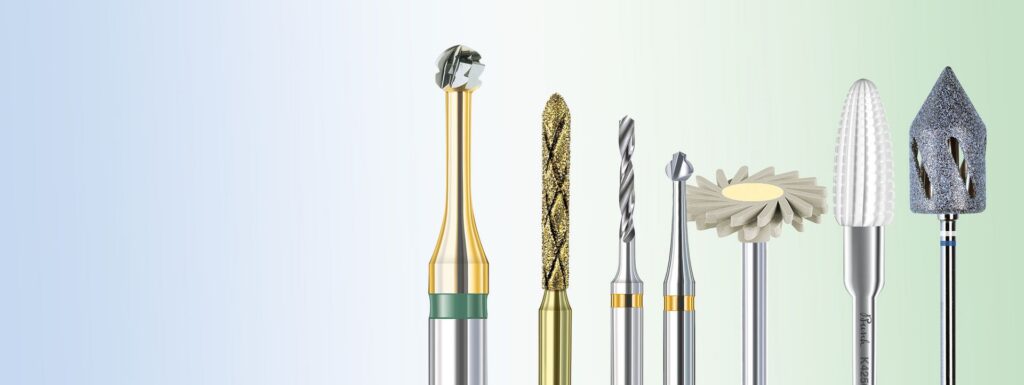When I grew up in my salon, I did not use an efile. I didn’t know how and as you have heard from me many times, we just didn’t have the resources or education. And quite truthfully, it just wasn’t something we did. Efiles were primarily used in podiatry practices only.
The industry has changed however and we have realized the benefits using an efile has on our bodies, how effective they can be in our services and how we can speed up our services.
The industry has gone through the cycle. there is far more education on the proper way to use an efile and have learned and seen the damage an efile can cause, if not properly trained.
What I haven’t seen however, is extensive knowledge on efile bits.
My new relationship with the Busch Mfg. Company has opened my eyes to so much concerning how bits are made, the difference in the materials of bits, what type of bit is recommended for what service and guidance on how to choose the right bit for you.
I am continuously amazed at the amount of education Busch has provided to me. As I read through the pages and pages of information I am optimistic and excited about educating our technicians on what I am learning. There is plenty and therefore I need to break this information into sections.
This week I want to share with you some basic Mfg. Information and talk about the difference in materials such as carbide vs diamond and what the recommended usage is.
I hope you get revived as I am about your bit selections and I hope I give you that ahah moment as well as I provide you with information to make the best choices for the services you provide.
Busch offers two categories of bits, Podiatry and Cosmetic.
Podiatry bits must follow the EU compliant quality management system. It isn’t as simple as applying and qualifying. This EU compliance is confirmed by an annual audit. You will recognize these bits by the CE marking and four digits (0124) on their packaging.
Legally, when working with bits it means in our cosmetic industries we can only work on and address the healthy tissue. This involves:
Cutting healthy nails
Reducing excess calluses
Cleaning healthy nails
Artificial nails
It is also important to note; when working on any unhealthy tissue, instruments (bits) must be sterilizable.
There are two(2) instrument groups
Instruments with defined grains
Hybrid
Diamond
Ceramic abrasives
Polishers
Instruments with defined cutting edges
Carbide cutters
Ceramic cutters
Steel cutters
There are seven (7) types of material and they all have their specific purpose. How you choose your material is based on what service and quite truthfully, personal preference. It was shared with me by Marvin our Busch representative who supported us at our Orlando trade show how different territories of the world have difference preferences. Diamond bits may be very popular here in the USA yet Ceramic bits may be the preference of the Asian market and Carbide bits might be the preference in Europe.
Hybrid – mix of ceramic and diamond
Diamond – universally usable for nails and calluses with an extensive selection of shapes, sizes and grits
Carbide – 2X as hard as hardened steel and break proof. They stay sharper longer and have a high abrasion performance
Ceramic – high performance with an excellent fracture toughness. The hardness ensures long lasting sharp instruments. They are also 60% lower weight than carbide bits.
Steel – fine sharp blades; similar to scalpels
Corundum – very hard crushed and stable mineral.. baked with ceramic
Polishers – for smoothing and finishing
I’m not actually sure the following information pertains to all bits. However, with the Busch bits there is a specific designation On the shaft of the bit which identifies its grit
Double black line = mega coarse
Single black line = super coarse
Green line = coarse
No ring = medium
Red line = fine
Yellow line = -fine
This type of information is extremely helpful when choosing which bit would be best suited for what you are attempting to accomplish. Whether that be grinding of thick nails, working around the nail fold, cleaning of cuticles, reducing mild or thick calluses and even reducing rhagades.
So what grit is best for what?
Double black = thick horn/severe calluses and rhagades
Black = hard calluses
Green = incipient (beginning stages) calluses and nails
No ring = callus and nail smoothing
Red = delicate for cuticles and nails
Yellow = delicate polishing of nails
As you can see there is more to a bit than meets the eye. Next week I will dwell into the different shapes and sizes. I will also discuss how to get long life out of your bits.
So much information to help you perform your services with an efile to ensure the most maximum effect.
Cj Murray, President



Thank you for your exceptional tools and the information we nail technicians need to use them properly.
My pleasure Joy. Appreciate your comment.